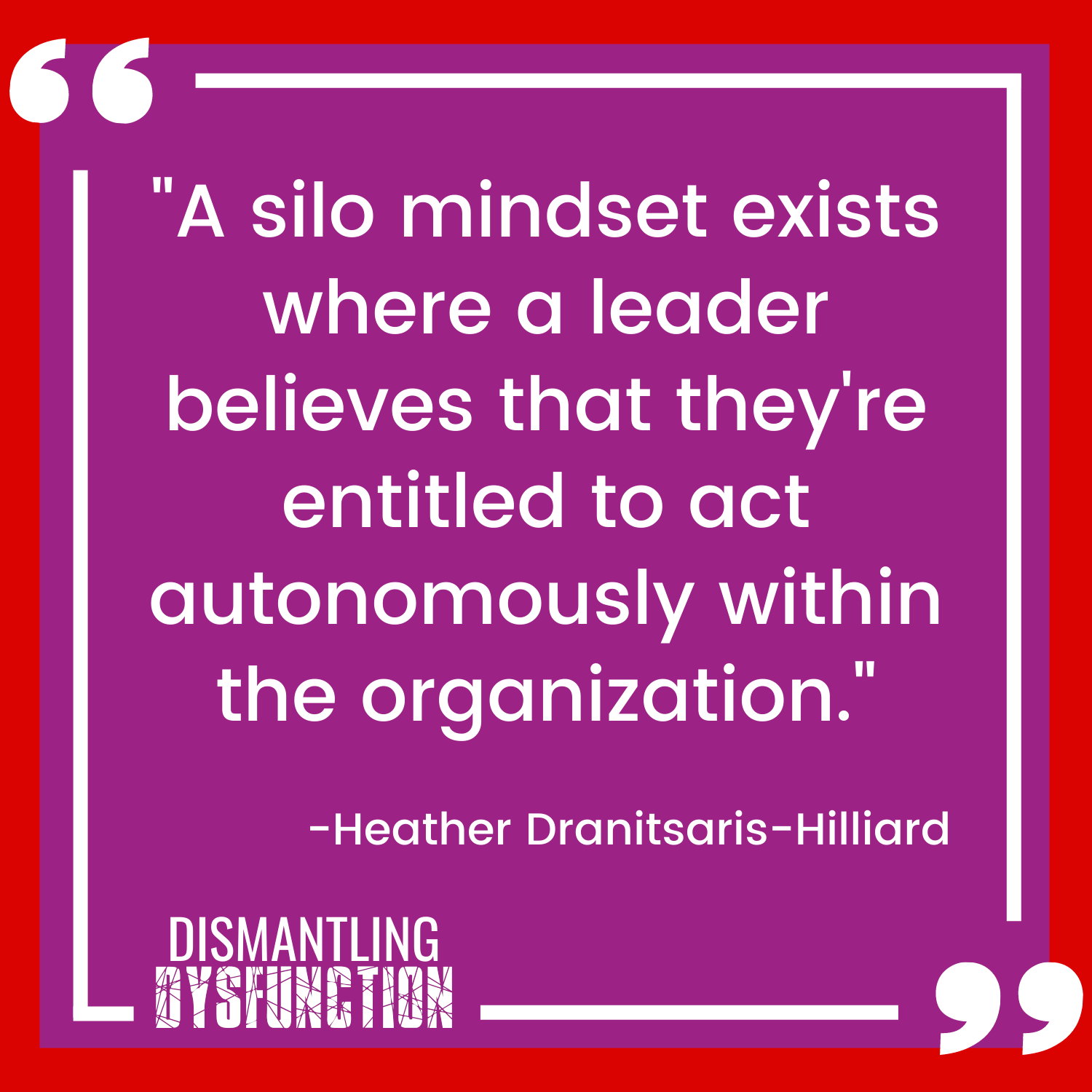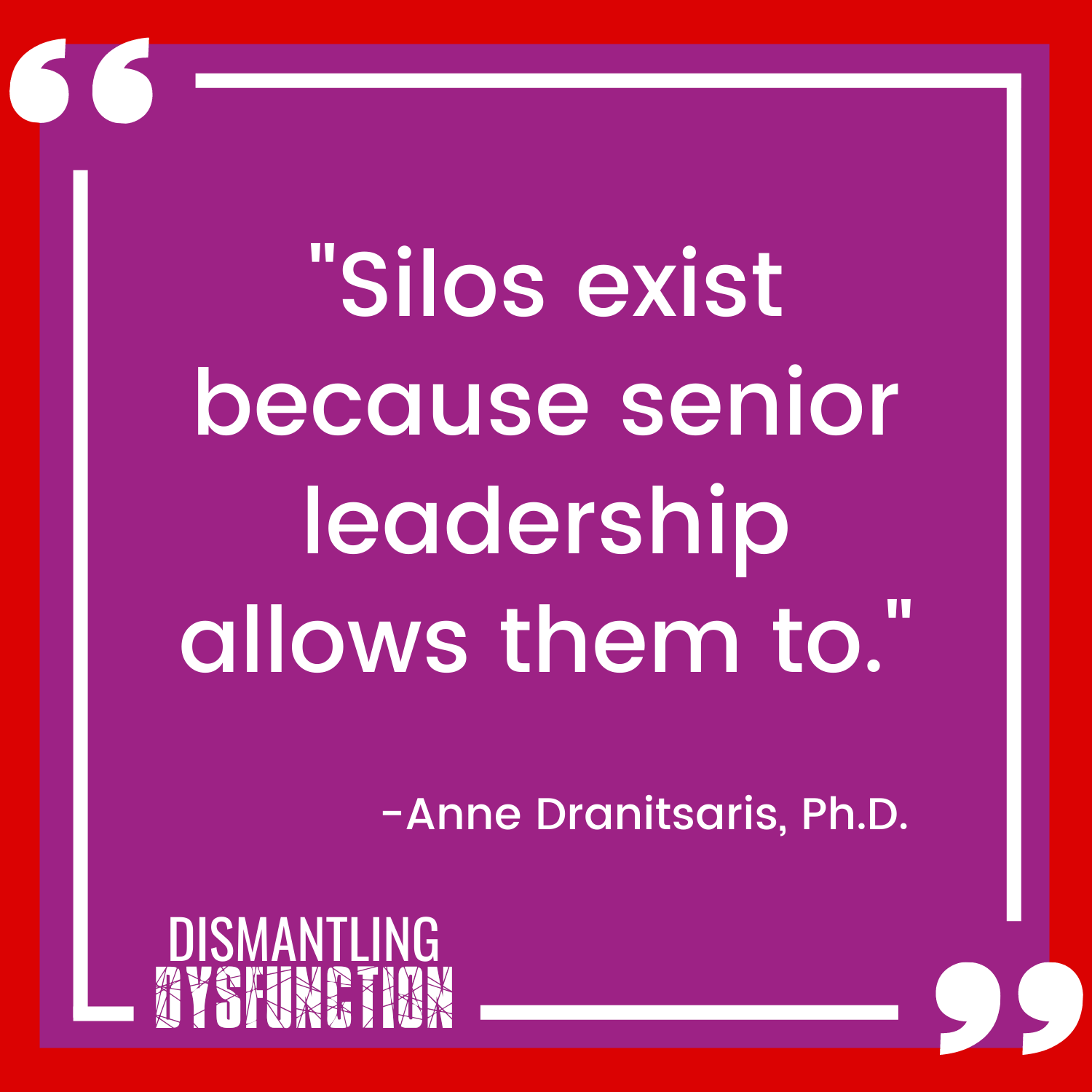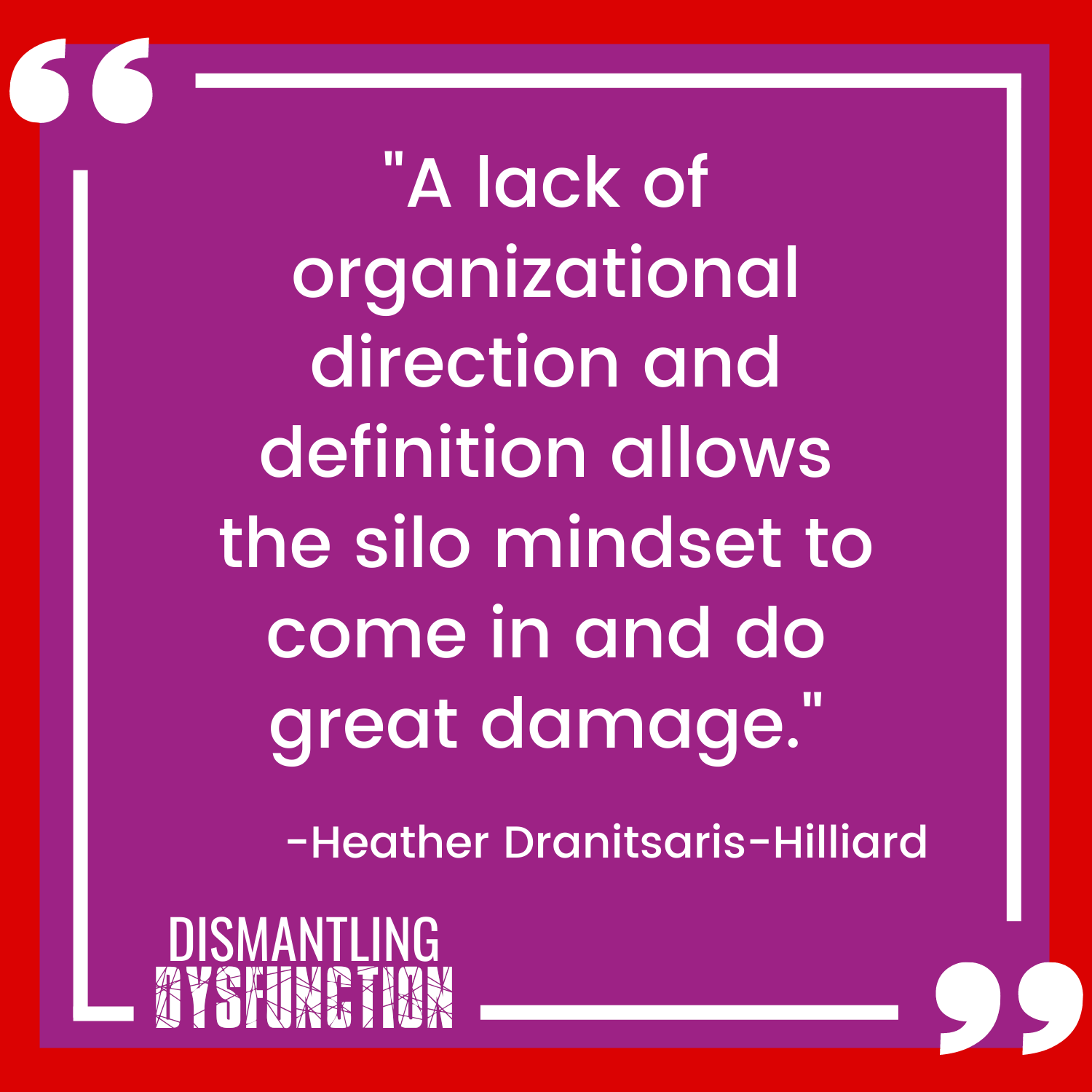Episode #16: Dysfunction of Silos
There is a type of organizational narcissism that exists because leaders in departments or functional areas are allowed to focus solely on themselves and their own agendas. They create silos as though they have a domain to rule over where employees work in the service of their leader and not the organization. Rather than having shared accountability, leaders and employees alike shout the battle cry of the silo, “It’s not my job!”, “It’s not my problem!”. In fact, these leaders don’t consider the interrelationships between their departments and others because of their narcissistic self-interest. So, silos are established and fortified, while the organization suffers all sorts of losses in the resulting gaps that form between them.
In today’s episode, Anne & Heather explore the Dysfunction of Silos and share some real client stories that illustrate just how common it is to find this type of leadership behavior in organizations today. They’ll also share some practical tips that you can use if the Dysfunction of Silos is causing your organization’s leaders, teams, and departments to prioritize their own agendas over the shared goals of the organization.
If you want to know more about Anne & Heather’s work with dismantling dysfunctions in organizations and leadership behavior at Caliber Leadership Systems, check out:
https://dismantlingdysfunction.com
https://www.dranitsaris-hilliard.com
Stop contributing to organizational dysfunction. Pick up your copy of So, You Think You Can Lead?: A Guide to Developing Your Leadership Authority and Potential
Make sure you sign up for our weekly newsletters for tips on how to dismantle dysfunction and develop your leaders: https://bit.ly/dismantlingdysfunction
Are you dealing with an organizational dysfunction you need help with? Or do you have a story you would like to share on our show? Contact us at [email protected].
IN THIS EPISODE:
- [01:15] Episode introduction and overview
- [03:37] The Silo Mindset
- [14:58] Silos are a direct result of a failure to communicate expectations
- [19:34] Silos create a lack of loyalty to the organization
- [23:35] Silos cause a lack of alignment with organizational goals
- [26:40] Dysfunctions are dynamic in nature
- [29:09] Silos cause decreased engagement and power struggles
- [34:12] Episode gem & practical takeaway
- [36:35] Episode wrap up
KEY TAKEAWAYS:
- A silo mindset is where a leader believes they are entitled to act autonomously within the organization and is characterized by the absence of sharing information, goals, timelines, challenges or processes with other groups.
- Once a business becomes large enough to have managers and functional areas, you have the structure for silos to exist. Any hierarchy has the potential to have silos and is not necessarily a bad thing in and of itself. When you add a silo mindset of the leader or employees to the mix, you run the risk of creating the dysfunction of silos where everyone works in isolation and protects their turf.
- Leaders have the power to create silos and senior leaders have the power to make sure that the dysfunction of silos doesn’t exist in their organization by managing leadership behaviour at all levels.
- Silos are created through a lack of alignment between leaders and organizational goals. Instead of working toward the collective goals, leaders with an “I know better” mindset put their agenda first. If others don’t agree, they don’t go along.
- At the end of the day, silos exist because senior leadership allows them. The silo mindset starts with a splitting off from the collective agenda and senior managers allowing it.
- As the issue of silos arises from the top, the solution resides there as well. Whenever leaders construct systems, processes, and procedures to ensure alignment to organizational goals without taking responsibility for leading their people and ensuring compliance, silos will exist.
- To address the Dysfunction of Silos, leaders must stop blaming middle managers and employees for being entitled and not aligning with expectations. Their performance must be managed, and “lone wolf” leadership behaviors disallowed.




Did you enjoy this episode?
If so, sign up for our newsletter and get exclusive access to some of our best content!
Plus, we’ll keep you in the loop – you’ll be among the first to know when we’ve hit “upload” on a new podcast, article, or YouTube video!





